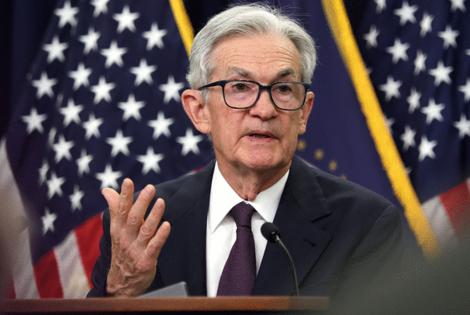The Fed just lowered interest rates. What does that mean to California?
Published in Business News
For the first time in nine months, the Federal Reserve on Wednesday lowered its key interest rate, a quarter-percentage point cut likely to only slightly lower borrowing costs for consumers buying items big and small.
“Rate cuts are welcome news for Americans with debt, but one small reduction won’t make much difference when bills come due,” said Matt Schulz, chief consumer finance analyst at LendingTree, which tracks interest rates.
“If the Fed continues to cut rates in future meetings, those moves could add up. For now, however, the impact on most families will be minimal,” he said.
The Fed’s target rate had been between 4.25% and 4.5% and will now be 4% to 4.25%. That rate is what banks charge to lend money to each other overnight, but it’s also a benchmark that guides a host of other rates.
President Donald Trump has pressed the Fed for even lower rates, believing it’ll spur lagging economic growth.
But the Fed has been wary, concerned of triggering higher inflation. The cost of living was up 2.9% in the 12 months ending in August, well above the Fed’s 2% target.
Trump administration tariffs were one reason for the spike, the biggest annual jump in prices since January, but higher shelter and gasoline prices also contributed.
The Fed is also charged with using policy to keep employment stable, and there are fears that the unemployment rate is ticking up.
The California Economic Forecast, a private firm based in Santa Barbara, last week predicted the jobless rate in the state would peak at 6.1% next year and stay in the 6% range throughout 2026.
Higher unemployment?
The rate, already the highest of any state, was 5.5% in July, the latest data available. The national rate was 4.2%.
With unemployment predicted to climb, economists saw little danger in lowering the interest rate.
Mark Schniepp, director of the California Economic Forecast, saw more rate reductions ahead.
“This will stimulate sales activity in the housing market since owners, who currently hold a low-interest-rate mortgage, will be more tempted to cash in their gains and move into larger houses,” he said.
Sung Won Sohn, president of Los Angeles-based SS Economics, said the softer labor market and slowing wage growth “strengthen the case for rate cuts in 2025.”
But he saw the Fed proceeding with caution, “emphasizing that supply-side policies lie beyond its control. The path forward will be gradual and data dependent.”
That’s why mortgage rates may not plunge significantly. The rates are not directly tied to the Fed rate. They are influenced by several factors, such as bond markets.
Rates on a 30-year mortgage loan averaged 6.35%, last week, according to Freddie Mac, which tracks rates. The year-to-date average is 6.7%.
While the Fed’s action could help push mortgage rates down, “there’s no guarantee. Unlike credit cards, mortgage rates aren’t directly tied to Fed moves. Anyone who says they know exactly how mortgage rates will respond is just guessing,” said Schulz, from LendingTree.
In California, the mortgage rate averaged 6.72% in July, down slightly from a year earlier. Year-to-date sales were down slightly.
“The housing market experienced a modest slowdown in both sales and prices in July as some buyers stepped back, waiting for more certainty in the market and broader economy,” said Heather Ozur, president of the California Association of Realtors.
There could be mildly good news for people who pay interest on credit cards.
Credit card interest has gone up in recent months, though that climb is largely over. “When the Fed moves, card rates usually follow, meaning Americans should see relief on both existing balances and new card offers soon,” Schulz said.
©2025 The Sacramento Bee. Visit at sacbee.com. Distributed by Tribune Content Agency, LLC.












Comments